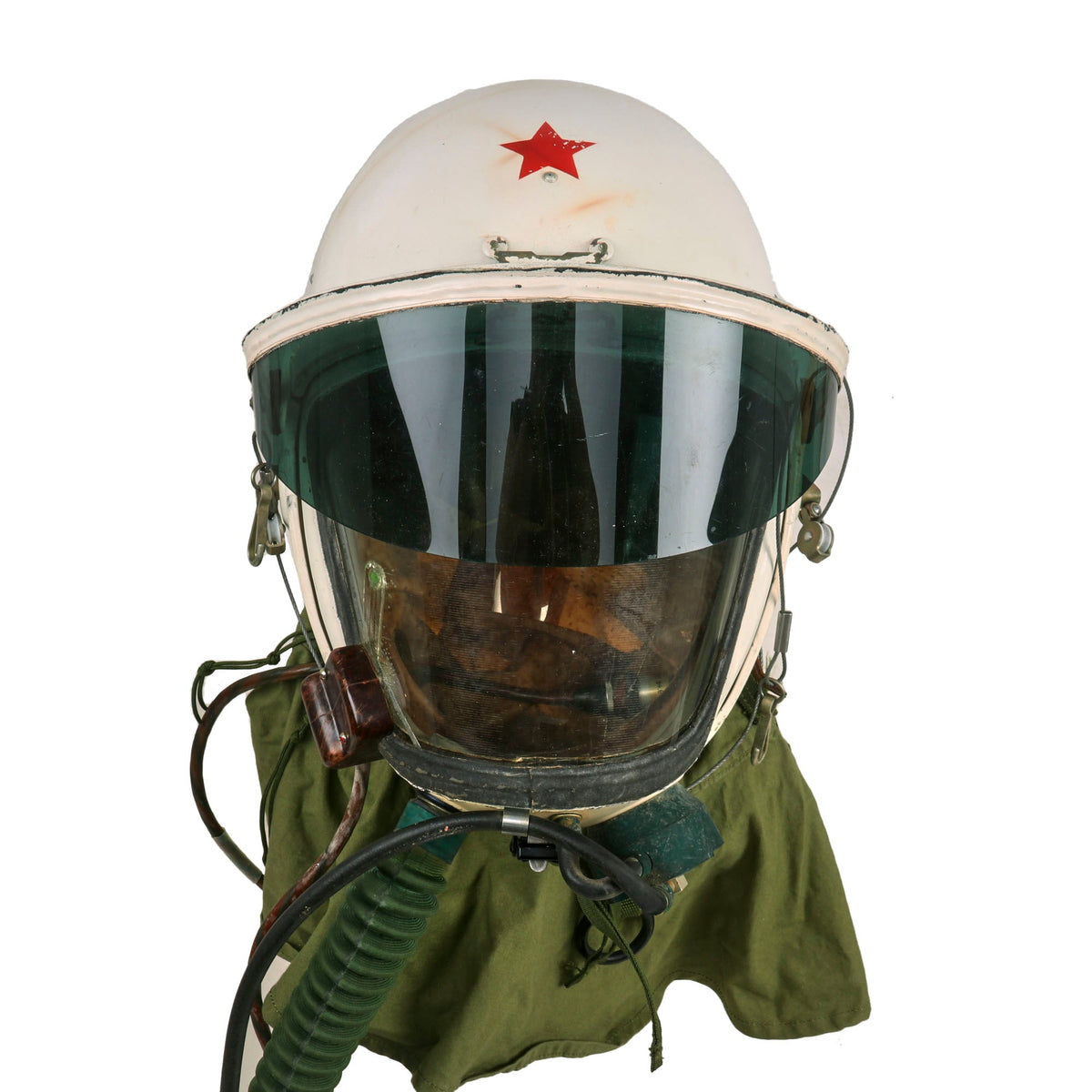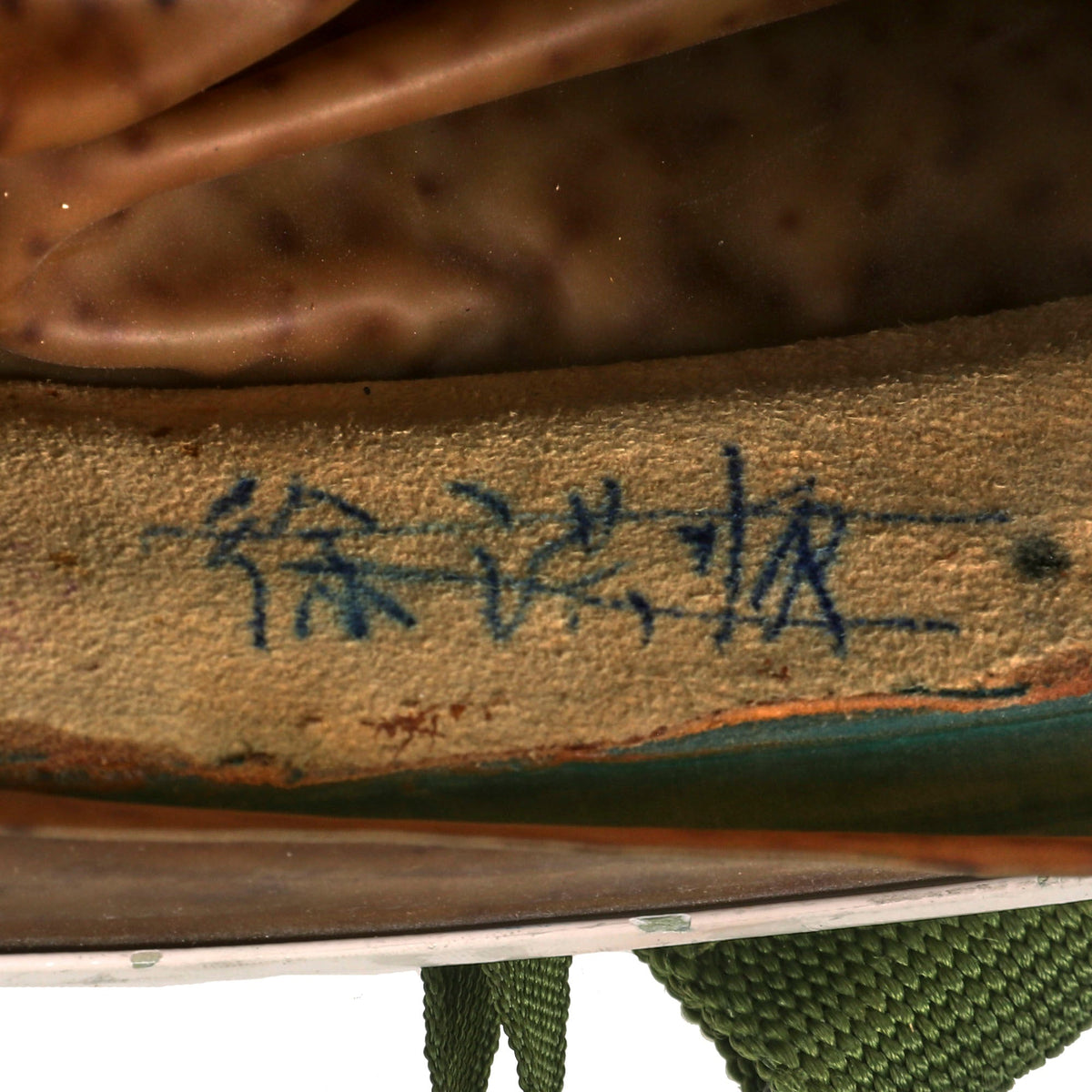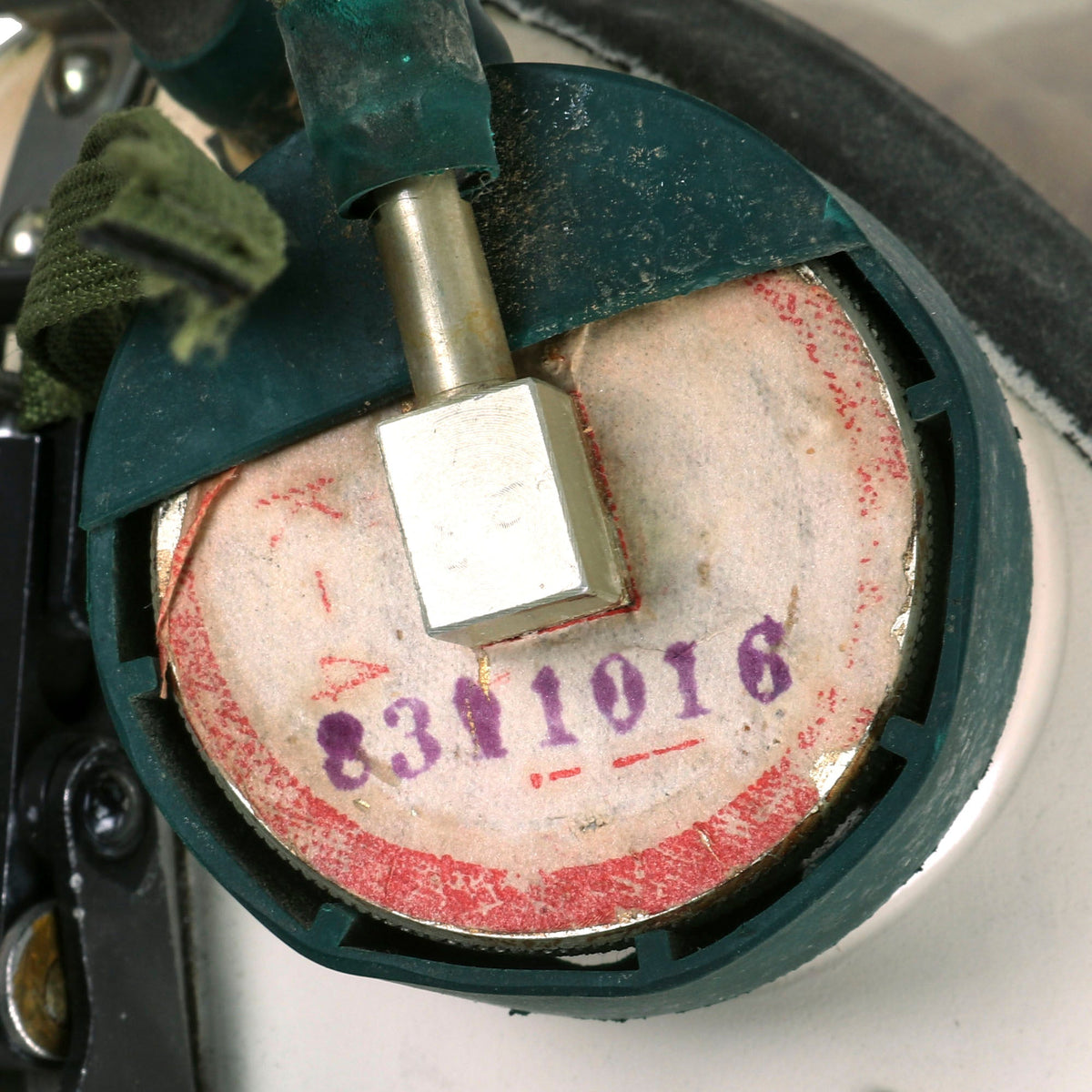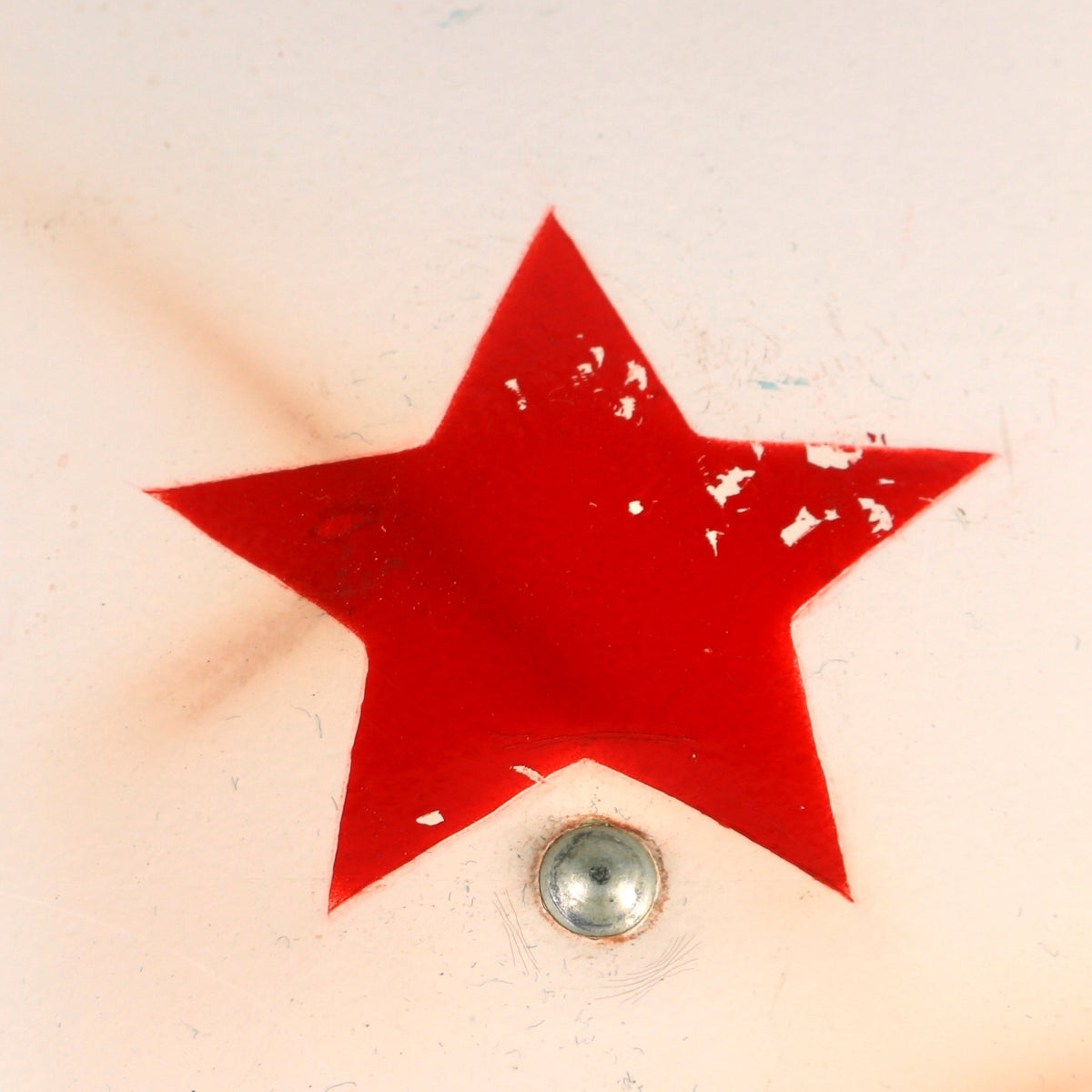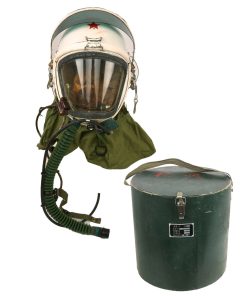Original Chinese Air Force Cold War TK-1 High Altitude Flight Helmet Set in Original Crate Original Items
$ 495,00 $ 148,50
Original Item: Only One Available. This is a rare complete Chinese Air Force Cold War era Tk-1 high altitude flight helmet in its original crate. The TK1 is comprised of three main parts; Nylon under helmet with communication components (transceiver and receivers, fire resistant lace up hood with neck protection and external rigid plastic shell with removable air tight clear face visor. The visor incorporates oxygen and communication lines. Visor is also heated to prevent icing and fogging at cold temperatures due to high altitudes.
The overall condition is excellent. The crate measures 14” tall with a 13¾” diameter. Size of the helmet is approximately 7½ (60cm), but we can’t say for certain as it’s a difficult helmet to size.
There is a data plate on the crate translating to:
HELMET-1 SIZE
PRODUCT NUMBER 710107
SEALED CAP SIZE 3
FLIGHT HAT SIZE 1
MANUFACTURING DATE MARCH 197?
There is a small booklet naming the helmet as a TK01 with its serial number, 3500315 as well as a log of when it was used to monitor the performance of the helmet. A really stellar addition with many written entries.
The smaller nylon helmet is in great shape with Chinese characters written on the interior. There are some written inside the larger helmet as well, but they are indiscernible.
This is a fantastic example of a Cold War Mi6 Pilot’s helmet that requires a great deal more research. Comes ready for further research and display!
The People’s Liberation Army Air Force (PLAAF) was officially established on 11 November 1949 and it is composed of 5 branches which are aviation, anti-aircraft artillery, surface-to-air missiles, radar and Airborne Corps. As of 2014, the PLAAF has a strength of around 398,000 personnel and is the largest air force in Asia.
The PLA Air Force underwent reorganization and streamlining as part of the reduction in force begun in 1985. Before the 1985 reorganization, the Air Force reportedly had four branches: air defense, ground attack, bombing, and independent air regiments.[12] In peacetime the Air Force Directorate, under the supervision of the PLA General Staff Department, controlled the Air Force through headquarters located with, or in communication with, each of the seven military region headquarters. In war, control of the Air Force probably reverted to the regional commanders. In 1987 it was not clear how the reorganization and the incorporation of air support elements into the group armies affected air force organization. The largest Air Force organizational unit was the division, which consisted of 17,000 personnel in three regiments. A typical air defense regiment had three squadrons of three flights; each flight had three or four aircraft. The Air Force also had 220,000 air defense personnel who controlled about 100 surface-to-air missile sites and over 16,000 AA guns. In addition, it had a large number of early-warning, ground-control-intercept, and air-base radars manned by specialized troops organized into at least twenty-two independent regiments.
Fast Shipping with Professional Packaging
Thanks to our longstanding association with UPS FedEx DHL, and other major international carriers, we are able to provide a range of shipping options. Our warehouse staff is expertly trained and will wrap your products according to our exact and precise specifications. Prior to shipping, your goods will be thoroughly examined and securely secured. We ship to thousands clients each day across multiple countries. This shows how we're dedicated to be the largest retailer on the internet. Warehouses and distribution centres can be located throughout Europe as well as the USA.
Note: Orders with more than one item will be assigned a processing date depending on the item.
Before shipping before shipping, we'll conduct a thorough inspection of the items you have ordered. Today, the majority of orders will be delivered within 48 hours. The delivery time will be between 3-7 days.
Returns
The stock is dynamic and we cannot completely manage it because multiple stakeholders are involved, including our factory and warehouse. So the actual stock may alter at any time. It's possible that you may not receive your order once the order has been made.
Our policy is valid for a period of 30 days. If you don't receive the product within 30 days, we are not able to issue a refund or an exchange.
You can only return an item if it is unused and in the same state as the day you received it. You must have the item in its original packaging.
Related products
Uncategorized
Armored Burgonet Helmet & Polearm from Scottish Castle Leith Hall Circa 1700 Original Items
Uncategorized
Uncategorized
Uncategorized
Uncategorized
Uncategorized
Uncategorized
Uncategorized
Uncategorized
Uncategorized
Band of Brothers ORIGINAL GERMAN WWII Le. F.H. 18 10.5cm ARTILLERY PIECE Original Items
Uncategorized
Uncategorized
Uncategorized
Angolan Rebel 1970s era 60mm Inert Display Mortar from Angolan Civil War Original Items
Uncategorized
Uncategorized
Uncategorized

